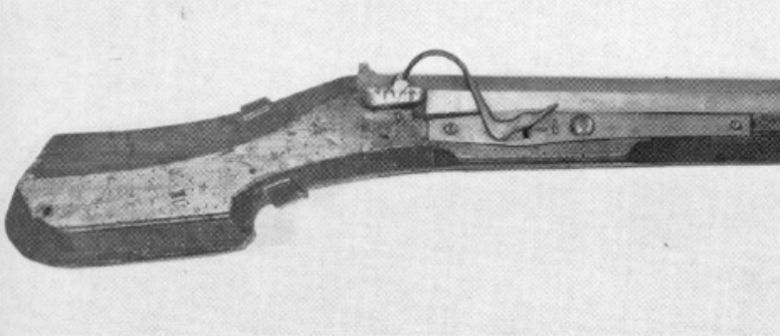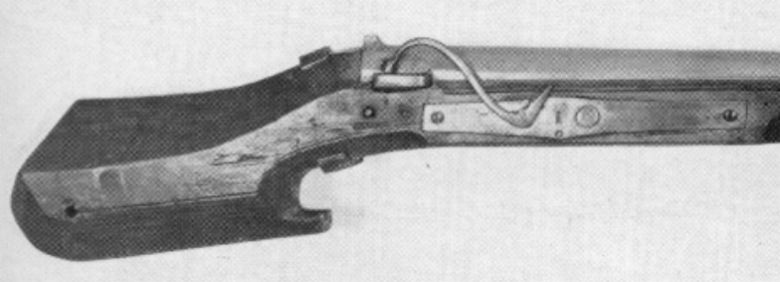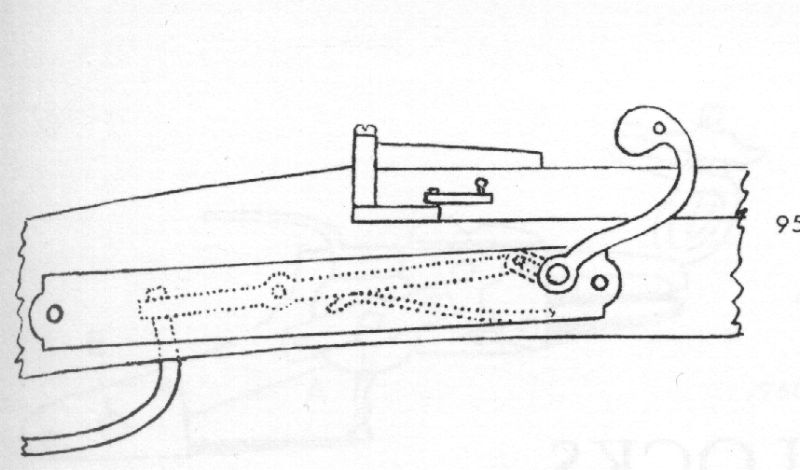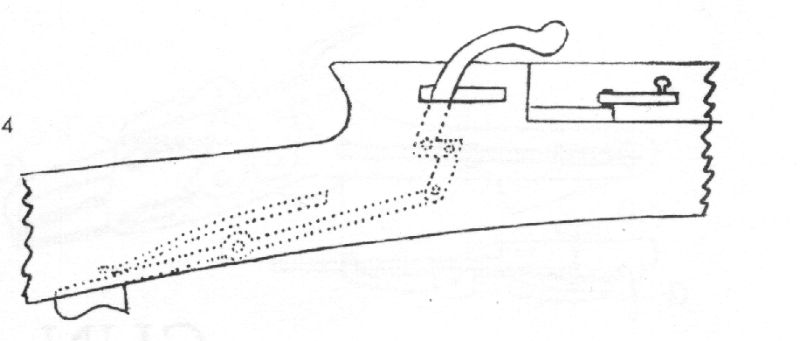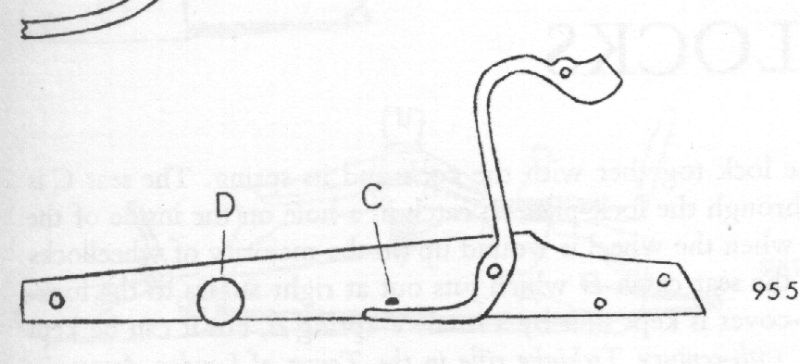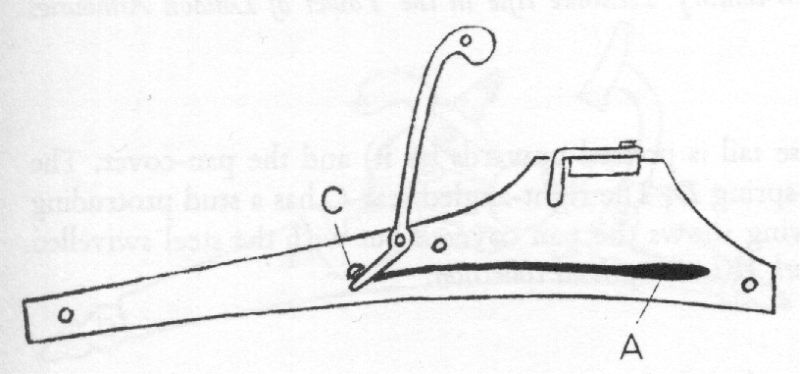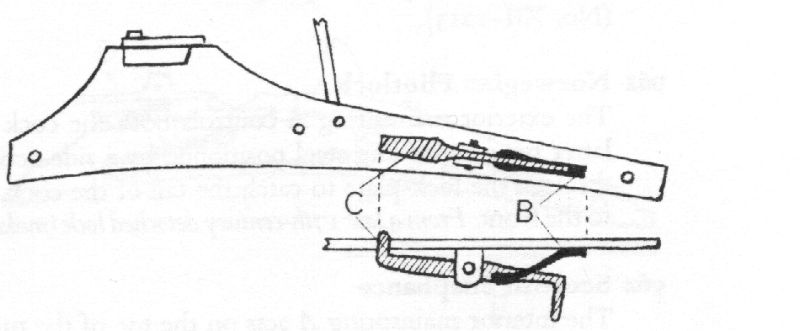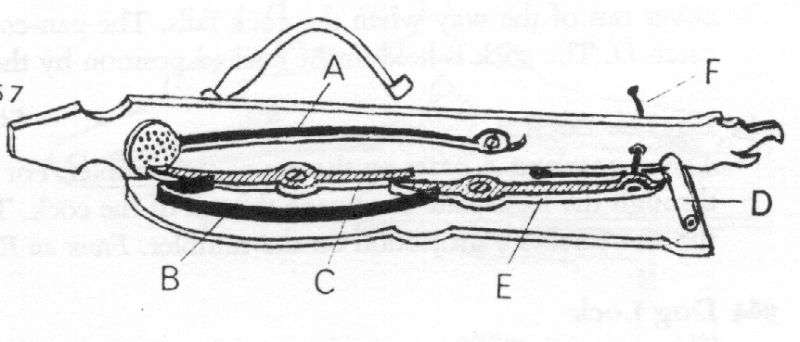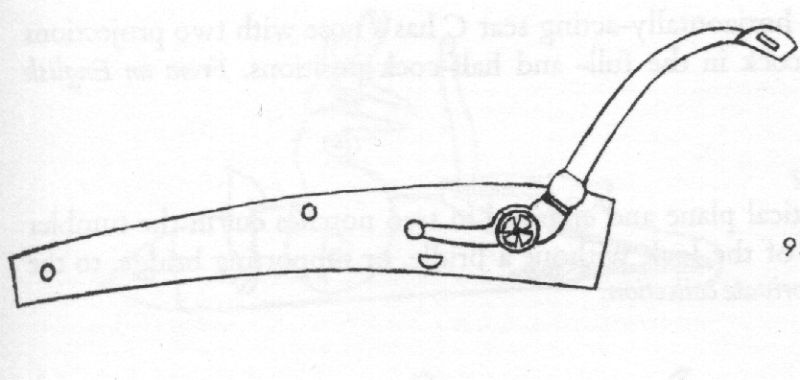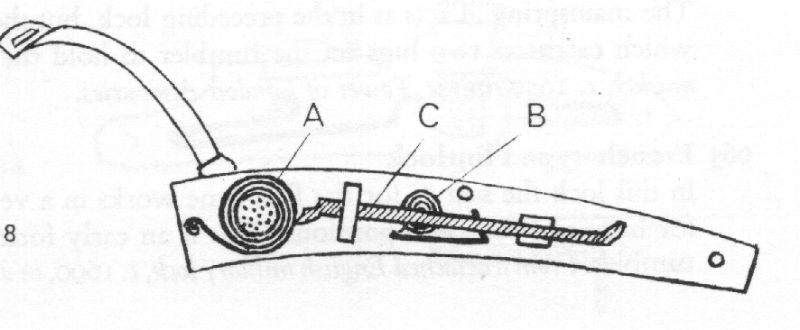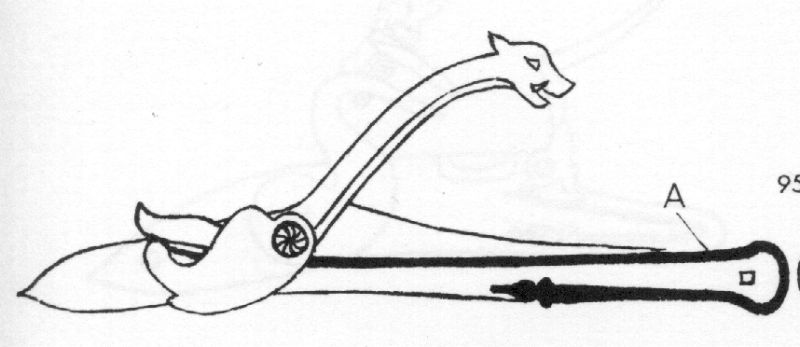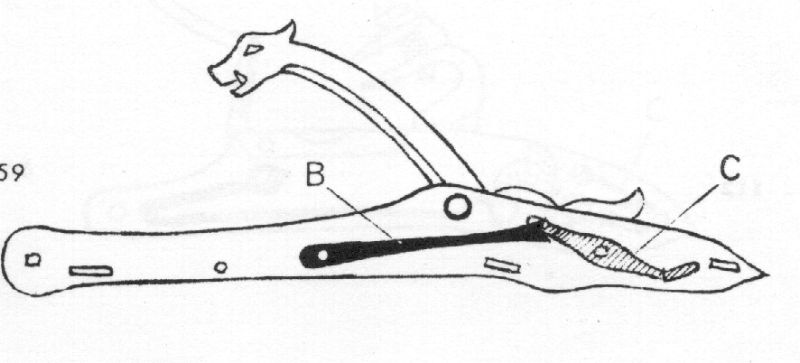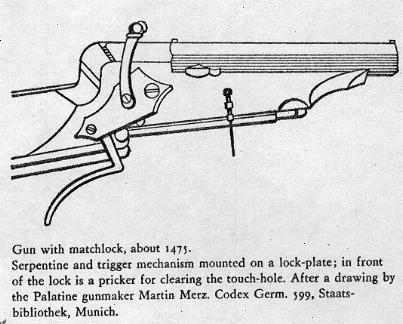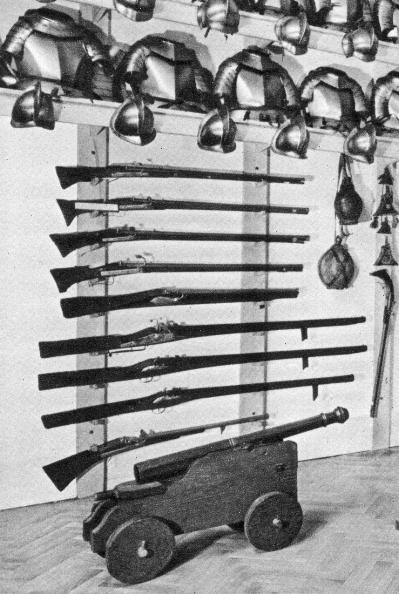Turn back now if you are on a slow connection - big images ahead!
-------------------
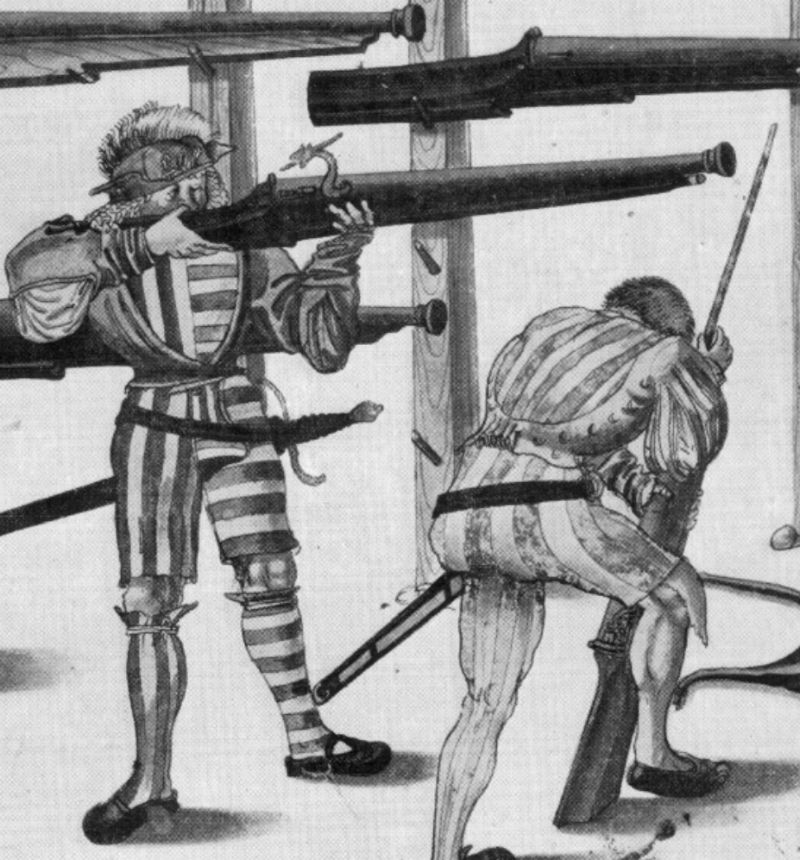 Matchlocks in the armoury of emperor Maximilian I. Either Codex Icon or Codex Monacensis 222 depending on who you believe, painted by Nicolaus Glockenthon in 1505. SOURCE: Harold L Peterson, Encyclopedia of Firearms, The Connoisseur,1964
Matchlocks in the armoury of emperor Maximilian I. Either Codex Icon or Codex Monacensis 222 depending on who you believe, painted by Nicolaus Glockenthon in 1505. SOURCE: Harold L Peterson, Encyclopedia of Firearms, The Connoisseur,1964
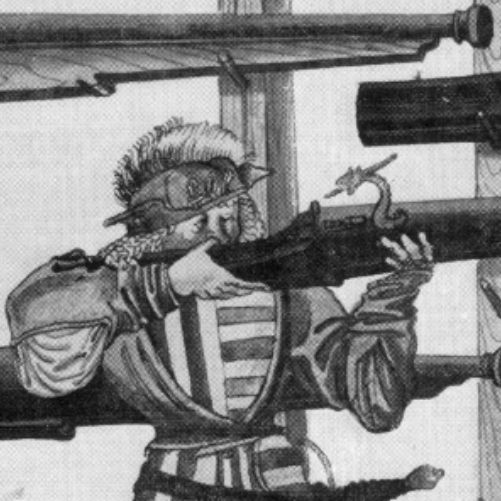
Detail showing lock. SOURCE: Harold L Peterson, Encyclopedia of Firearms, The Connoisseur,1964

Detail showing four guns, three of which have a similar type of lock. SOURCE: Harold L Peterson, Encyclopedia of Firearms, The Connoisseur,1964
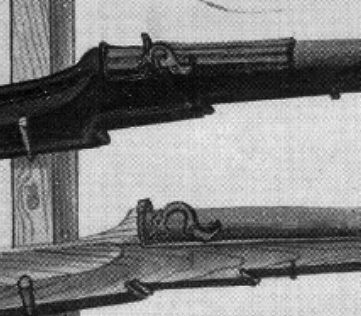
Detail of top two locks. SOURCE: Harold L Peterson, Encyclopedia of Firearms, The Connoisseur,1964
to be continued...
-------------------


Detail showing lock. SOURCE: Harold L Peterson, Encyclopedia of Firearms, The Connoisseur,1964

Detail showing four guns, three of which have a similar type of lock. SOURCE: Harold L Peterson, Encyclopedia of Firearms, The Connoisseur,1964

Detail of top two locks. SOURCE: Harold L Peterson, Encyclopedia of Firearms, The Connoisseur,1964
to be continued...






